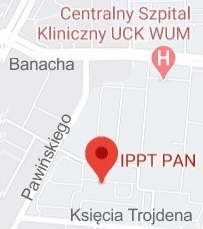| 1. |
Ahadi A.♦, Sarvari E.♦, Frenzel J.♦, Eggeler G.♦, Stupkiewicz S., Rezaee Hajidehi M., Size-dependent transformation patterns in NiTi tubes under tension and bending: Stereo digital image correlation experiments and modeling,
JOURNAL OF THE MECHANICS AND PHYSICS OF SOLIDS, ISSN: 0022-5096, DOI: 10.1016/j.jmps.2025.106413, Vol.206, pp.106413-1-22, 2026 Abstract:
The dependence of transformation pattern in superelastic NiTi tubes on tube outer diameter D and wall-thickness t is investigated through quasi-static uniaxial tension and large-rotation bending experiments. The evolution of outer-surface strain fields is synchronized with global stress-strain and moment-curvature responses using a multi-magnification, high-resolution stereo digital image correlation system at 0.5-2 X magnifications. The transformation patterns exhibit systematic size-dependent behaviors. Under tension and for a specific D, as the diameter-to-thickness ratio D/t decreases, a decreasing number of fat/diffuse helical bands emerge, in contrast to sharp/slim bands in thin tubes. Consequently, the austenite-martensite front morphology transitions from finely-fingered to coarsely-fingered with decreasing D/t. Below a characteristic D/t, front morphology no longer exhibits patterning and phase transformation proceeds via propagation of a finger-less front. Moreover, the transformation pattern exhibits an interrelation between D and D/t, where a front possessing diffuse fingers is observed in a thin but small tube. Under bending, both the global moment--curvature response and transformation pattern exhibit D- and D/t dependence. While wedge-like martensite domains consistently form across all tube sizes, their growth is noticeably limited in smaller and thicker tubes due to geometrical constraints. A gradient-enhanced model of superelasticity is employed to analyze the distinct transformation patterns observed in tubes of various dimensions. The size-dependent behavior is explained based on the competition between bulk and interfacial energies, and based on the energetic cost of accommodating martensite fingers. By leveraging an axisymmetric tube configuration as a reference energy state, the extra energy associated with the formation of fingers is quantified. Keywords:
Shape memory alloys, Martensitic phase transformation, Digital image correlation, Front morphology, Size effects, Finite-element analysis Affiliations:
| Ahadi A. | - | other affiliation | | Sarvari E. | - | other affiliation | | Frenzel J. | - | other affiliation | | Eggeler G. | - | other affiliation | | Stupkiewicz S. | - | IPPT PAN | | Rezaee Hajidehi M. | - | IPPT PAN |
|  |
















